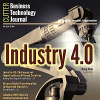Strategic advice to leverage new technologies
Technology is at the heart of nearly every enterprise, enabling new business models and strategies, and serving as the catalyst to industry convergence. Leveraging the right technology can improve business outcomes, providing intelligence and insights that help you make more informed and accurate decisions. From finding patterns in data through data science, to curating relevant insights with data analytics, to the predictive abilities and innumerable applications of AI, to solving challenging business problems with ML, NLP, and knowledge graphs, technology has brought decision-making to a more intelligent level. Keep pace with the technology trends, opportunities, applications, and real-world use cases that will move your organization closer to its transformation and business goals.
Insight
The advent of big data technologies with an emphasis on the ease and speed of ingestion of large amounts of data into a data lake — as opposed to the often-complex traditional ETL processes for loading into a data warehouse — has meant far less focus on defining schemas or structures. The focus now shifts toward how to achieve an adequate level of governance of such data lakes. This is where the data catalog provides a central canonical reference point of business meaning to underpin any data governance activities of the data lake.
In this issue of The Cutter Edge we explore the idea of allowing and encouraging dissent in organizations, four best practices that can help address innovation challenges, and innovation models across industries.
New commercial applications are now available that utilize artificial intelligence, machine vision, Internet of Things connectivity, and camera-based security technologies to detect and interdict active shooter incidences before they become deadly.
Statistical Project Management, Part VI: The Nature of the Project
In Part VI of this Executive Update series on statistical project management, we look at the “nature” of the project and its role as the firm’s “working memory.”
In the digitized world of financial data, there are truly enormous volumes of heterogeneous structured and unstructured data across siloed data stores. Managing such complexity is beyond human cognitive abilities or comprehension; hence, AI-based smart machines are required to assist human cognition and decision making. We believe that if AI is to achieve its promise, financial institutions are going to have to address a range of challenges.
Industry 4.0 — An Introduction
In this month’s issue of Cutter Business Technology Journal, we examine the latest advancements in technologies related to Industry 4.0 and the impact of these technologies on work, business, and organizations by featuring six articles that cover a range of topics.
We don’t want to design in one large lump — ever! Instead, we want to create a layer or certain amount of architecture (services, plumbing, back-end functionality, etc.) and then build something on top of it.
This Advisor describes some of the notable challenges facing the evolution of blockchain.



















